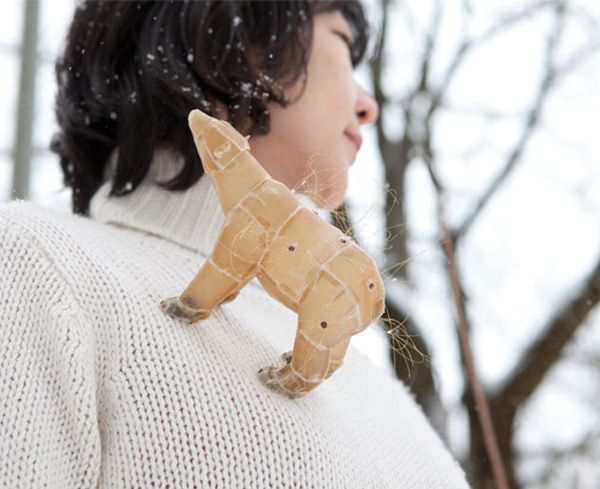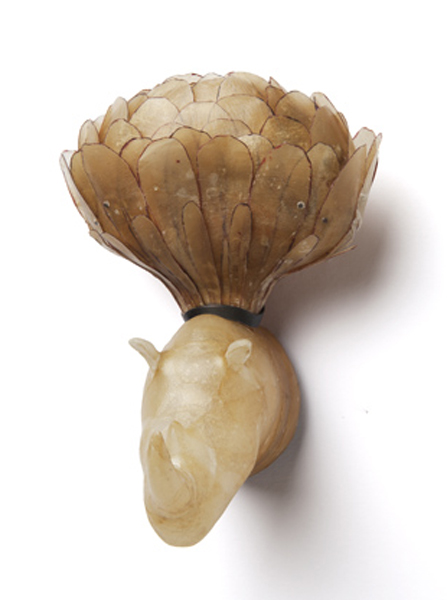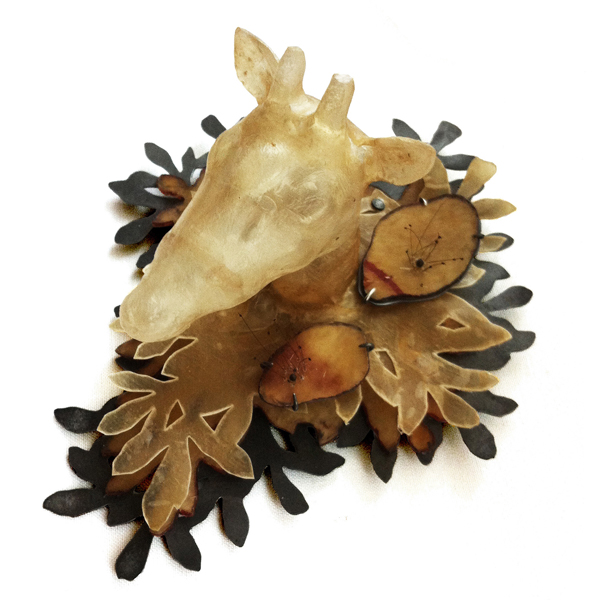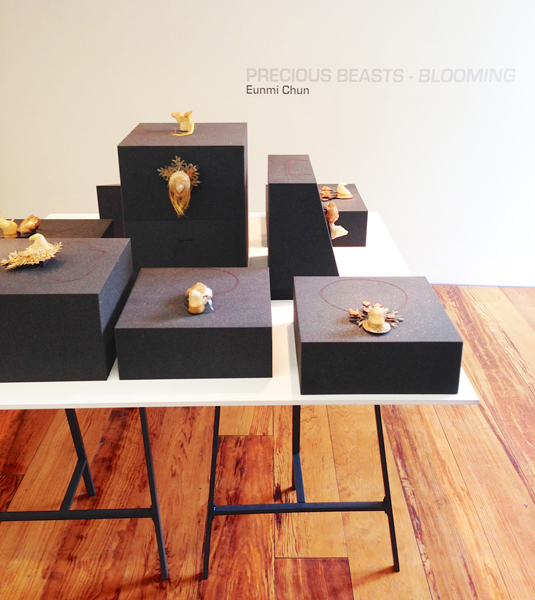
Find out more about Chun’s work from Pravu Mazumdar’s One on One article about Eunmi Chun.
Olivia Shih: You started your education with a BFA in mathematics and craft, then a MFA in jewelry and metal in Korea. Afterward, you traveled to Munich and studied under Professor Otto Künzli. Could you talk about the transition from one environment to the other and your learning process?
Eunmi Chun: I first started my college education in mathematics, so when I joined the metal department, I had to start with senior (third year in Korea) students. As a result, I learned demanding skills in quite a short time, during which my work was inferior to that of fellow students. But due to that situation, I started to develop my own methods.

Find out more about Chun’s work from Pravu Mazumdar’s One on One article about Eunmi Chun.
Olivia Shih: You started your education with a BFA in mathematics and craft, then a MFA in jewelry and metal in Korea. Afterward, you traveled to Munich and studied under Professor Otto Künzli. Could you talk about the transition from one environment to the other and your learning process?
Eunmi Chun: I first started my college education in mathematics, so when I joined the metal department, I had to start with senior (third year in Korea) students. As a result, I learned demanding skills in quite a short time, during which my work was inferior to that of fellow students. But due to that situation, I started to develop my own methods.
In Munich, I was surprised by how international the Academy of Fine Art Munich was, especially the jewelry department led by Otto Künzli. We were encouraged to express our own cultures in class meetings, and I learned different perspectives and ways of thinking in that international environment. In the process, not only did I start to better understand other cultures, but also my own.
What first led you to create creatures from organic materials, such as pigskin, cow intestine, seeds, and hair? Does the impermanent nature of these materials play an important role in your work?
Eunmi Chun: In Munich, jewelry material is not limited to classic, precious metals such as gold and silver. This led me to question: what is the beauty of jewelry? Then I asked myself how I could pursue this beauty. I decided on working with disgusting or rejected materials, believing that something repulsive, given the right context, could be beautiful. That is how organic materials came into the picture. The impermanence of these materials was not my main point, but it does correspond to my central theme, which is the cycle of life in humans, plants, and animals. We all will return to dust and be reborn someday.

This exhibition includes creatures in the likeness of giraffes, lions, rhinos, eagles, and other animals. How did you select these particular animals?
Eunmi Chun: I’ve always been fascinated by how humans can have ambivalent feelings or complex characters, and I wanted to express this through my work. For me, animals symbolize aggressiveness, wildness, and activeness, whereas plants represent passiveness. To maximize this contradictory combination of traits, I mostly selected animals with aggressive natures.

Eunmi Chun: I think I should separate my answer into two parts—the body and the hair. With the body, the gold is an unintended effect that comes from the transparency of the materials. On the other hand, I wanted to give the hair, which used to be alive, eternal life. I plated the hair gold because gold signifies eternity.
You’ve said that you search for your life’s truth, much in the way an alchemist searches for eternal life or gold. How did jewelry making become your preferred method of searching?
Eunmi Chun: I think life itself is a process of seeking truth. It is just like the journey of an alchemist searching for gold. It does not matter if he succeeds in the end or not, it is only the process that counts. The questions we ask ourselves change during our lives, like what to do and how to make decisions.
I find my materials in the process of seeking my own answers. Everyone needs an individual method to express personal thoughts and ideas. My method is to create something structural with three-dimensional materials.

Eunmi Chun: Nowadays, we live in an abundance of information. With one click, we can see all that is happening on the other side of the Earth through the Internet. It is easier for us to look at others instead of concentrating on ourselves. Because of this, we learn to adopt other people’s existing techniques, and original ideas and thoughts disappear where they are ironically most needed. Therefore, I want to encourage graduates to seek their own methods and characters and to continue developing them. The process will never be easy, and it’s going to be a long journey of seeking, but this should also be one of the most exciting things in life, I think.
Finally, what interesting things have you seen, read, or heard lately?
Eunmi Chun: I am reading an interesting book call Fatigue Society, written by Byung-Chul Han. It analyzes contemporary capitalistic society, where people exploit themselves in order to obtain excessive outcomes from life and only succeed in getting progressively depressed. The book provides an interesting observation of present life in society, an observation it considers to be the truth of life.




